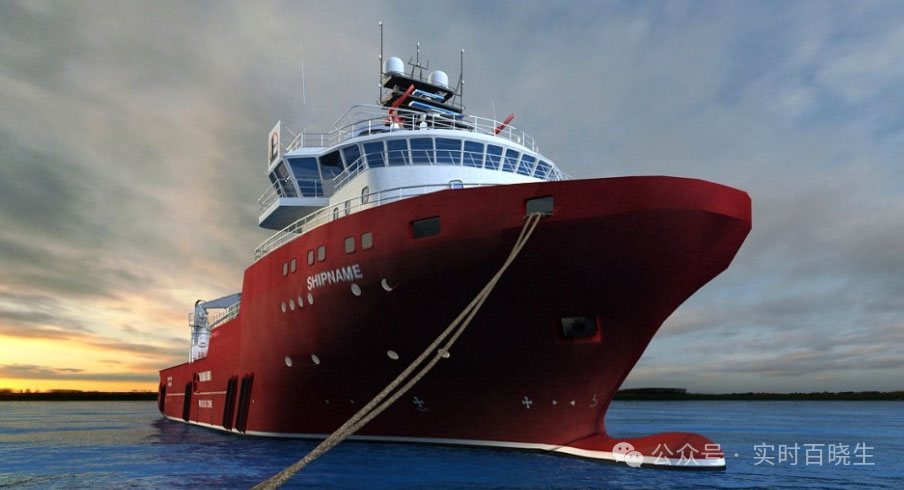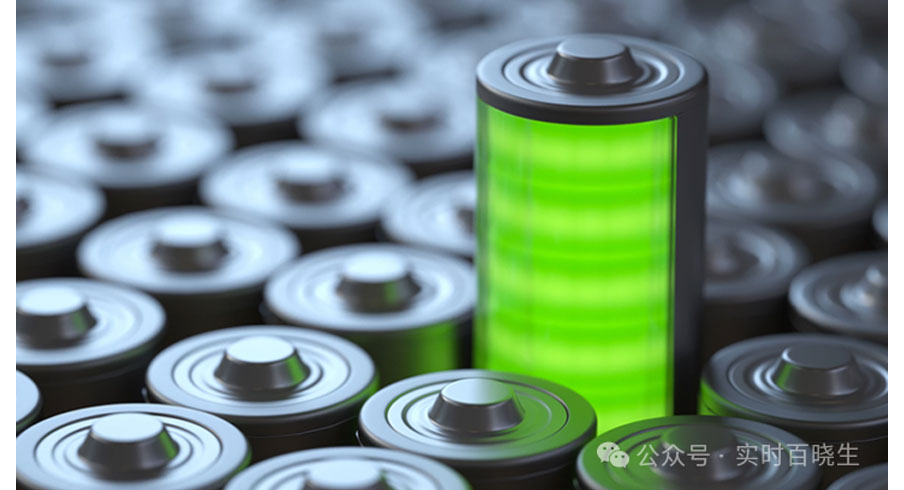
Marine batteries represent a specialized class of energy storage devices meticulously engineered for maritime applications. Unlike conventional batteries, marine batteries are fortified to withstand the extreme conditions typical of marine environments, including persistent vibrations, humidity, and fluctuating temperatures encountered at sea or inland waterways. These batteries come in various types, each tailored to meet the specific power requirements and operational conditions of different vessel categories. Marine batteries play a critical role in powering essential systems aboard ships and vessels, ensuring smooth and uninterrupted operations ranging from engine startups to navigation lights, communication equipment, water pumps, refrigeration units, entertainment systems, and more. The reliance on these dependable power sources underscores their indispensable role in facilitating safe and comfortable maritime voyages.

In most instances, marine propulsion systems rely on internal combustion engines driving generator sets to supply power. Given the unpredictable marine environment and variable loads, fuel efficiency declines significantly when the load deviates from optimal points, leading to incomplete fuel combustion and the emission of harmful nitrogen and sulfur oxides, contributing to environmental pollution. Energy storage technologies present a viable solution to mitigate this issue. By harnessing excess energy during periods of low demand and storing it to meet peak demand, energy storage units prevent strain on the grid and stabilize power supply. Although widely adopted in the electric vehicle industry, advancements in large-scale energy storage technologies have opened up possibilities for their application in marine propulsion systems. Integrating energy storage units can help overcome power fluctuations and enhance the stability and reliability of shipboard electrical systems. Additionally, energy storage systems improve fuel efficiency and reduce emissions, making them crucial for environmental sustainability.
Among the various energy storage methods, which include electrochemical, physical, and electromagnetic storage, each has its merits and demerits. Electrochemical storage, comprising battery and supercapacitor technologies, and physical storage, encompassing pumped hydro, compressed air, and flywheel systems, are prominent. Electromagnetic storage, such as superconducting systems, is less feasible due to low energy density, high costs, and immature technology. For marine applications, supercapacitors and flywheels offer rapid response times and high power densities but have lower energy densities and shorter discharge durations compared to batteries. Among batteries, lead-acid and lithium-ion batteries are commonly utilized. Lead-acid batteries are cost-effective and safer, although they have lower energy densities and poor environmental performance. Lithium-ion batteries, despite higher costs and safety concerns, excel in energy density and are more environmentally friendly. Lithium iron phosphate (LFP) batteries, in particular, are gaining popularity in marine applications due to their mature technology, wide adoption in various sectors, and reasonable pricing.
Compared to traditional propulsion systems, electric propulsion systems offer superior economic benefits, maneuverability, safety, reduced vibration, and increased reliability. These systems are increasingly employed in ferries, dredgers, tugs, and luxury cruisers. With the rapid advancement of power electronics and growing energy crises, the transition from diesel engines to electric propulsion systems is inevitable. Electric propulsion systems, known for their enhanced maneuverability, reliability, operational efficiency, flexible layout, economic viability, and ease of maintenance, are becoming the preferred choice for various vessel types, including workboats, tankers, and luxury yachts. The integration of energy storage technologies, particularly large-capacity storage systems, is essential to address the challenges posed by variable loads and environmental disturbances, ensuring stable power supply and optimizing system performance.

Globally, the application of battery-powered ships is in the exploratory and demonstration phase, with limited operational experience. By the end of May 2019, approximately 155 electric vessels were in operation or under construction, featuring battery capacities ranging from 1000kWh to 4000kWh. Both lithium iron phosphate and ternary lithium batteries are used, with China having constructed over 30 pure battery-powered ships since 2015, utilizing maximum battery capacities of 3000kWh exclusively in LFP batteries. Despite the maturity of the battery industry, marine applications and associated industries occupy a smaller market share, presenting significant growth opportunities.
In China, marine lithium batteries must undergo certification by the China Classification Society (CCS). As of October 2019, the CCS had completed or was in the process of certifying 37 marine battery products, including 15 power battery projects and 5 battery management system projects. The CCS has established comprehensive guidelines for the application of lithium batteries in marine settings. Classification societies typically publish standards and requirements applicable to ship construction and operations, including specifications for marine energy storage batteries. These standards encompass safety, performance, specifications, installation criteria, charging and discharging management, and environmental impact reliability for marine energy storage batteries. Vessels selecting and utilizing energy storage batteries must adhere to relevant standards and regulations to ensure safe and efficient operations in compliance with legal and regulatory frameworks.
The burgeoning adoption of lithium batteries in marine applications reflects the industry's commitment to innovation, sustainability, and operational excellence. As technology advances and regulatory frameworks evolve, the future of marine propulsion is poised to embrace cleaner, more efficient, and environmentally responsible solutions, powered by advanced energy storage systems.
Due to the unique nature of maritime operations, the use of UPS and batteries is particularly prevalent. Below, we provide a brief introduction to the service life of batteries used in common equipment and UPS systems aboard ships:
One, Radio Equipment:
1. Radio Batteries:
Manufacturers often claim lifespans of 5 to 10 years for radio batteries. However, improper charging and discharging practices over time significantly shorten their actual lifespan, potentially leaving radio communications non-functional in emergency situations. Due to the lack of rigorous annual inspections, many batteries go untested. We recommend performing a full charge-discharge cycle every three months for radio batteries to effectively extend their service life.
2. Batteries for EPIRB, Two-Way VHF, SART, VDR, etc.: Follow the manufacturer's recommendations or conduct periodic standard tests for these devices. Timely identification and replacement of faulty batteries ensure readiness in case of emergencies.
Two, Emergency Generator Starting Batteries:
Most starting batteries remain in a float-charging state for extended periods. It is advisable to disconnect the charging source when starting the diesel engine to protect the battery. Continuous float charging may lead to overcharging, increasing the risk of battery explosion during engine startup, which can trigger accidents.
Three, UPS Batteries for Alarm Systems and Other Critical Equipment in the Engine Control Room:
We suggest replacing these batteries every three years. When ordering new batteries, specify the voltage capacity, physical dimensions, and connector type. Ocean-going vessels should plan ahead for orders, as batteries are classified as hazardous goods, and some ports may prohibit their loading onto ships, potentially compromising vessel safety.
Four, PLC Battery Replacement:
We also recommend replacing PLC batteries approximately every three years. Refer to the equipment manual for precautions during replacement. Ensure that the correct battery and connector models are specified when placing an order.
These guidelines aim to optimize the performance and longevity of batteries used in maritime applications, ensuring safety and reliability aboard ships. Proper maintenance and timely replacement of batteries are crucial for maintaining operational integrity and emergency preparedness.
Marine batteries and automotive batteries are designed with functionalities that accommodate full charges, discharges down to 50%, and subsequent recharges. Utilizing a marine battery in a vehicle might not be the optimal choice for powering your car. It could potentially reduce the battery’s lifespan and even affect the longevity of your vehicle’s electrical components. Ideally, it's best to replace your car's battery with one of the same grade that was originally equipped. It's not advisable to substitute automotive batteries with marine batteries.
When the charging shore power is connected to the onboard charging facilities (including the shore power box) via charging coupling devices (such as charging guns, connectors, etc.), verify that the following requirements are met:
1. The charging coupling device shall be equipped with mechanical interlocks to prevent hot plugging and unplugging, as well as to secure the charging cable against detachment during the charging process.
2. Under both normal and fault conditions, the charging coupling device must incorporate safety measures to guard against electric shocks.
3. The design of the charging coupling device should prioritize ease of operation, allowing connection to the shore power facility without the need for special tools, and ensuring no contact with live parts.
Inspect whether the charging device is equipped with a temperature monitoring system. This system should be capable of transmitting corresponding signals to the charging control system based on temperature variations, enabling temperature monitoring at the charging gun terminal and implementing over-temperature protection functions.
If the battery system is charged through a DC busbar, check that appropriate safeguards are in place to prevent damage to the traction battery caused by malfunctions in the DC busbar system.
The aforementioned details have already been covered, hence no further elaboration is provided.
Marine batteries represent a specialized class of energy storage devices meticulously engineered for maritime applications. Unlike conventional batteries, marine batteries are fortified to withstand the extreme conditions typical of marine environments, including persistent vibrations, humidity, and fluctuating temperatures encountered at sea or inland waterways.
Lithium battery technology has been successfully implemented in the electric vehicle industry. The advancement of large-capacity energy storage technologies has made it feasible to apply lithium batteries in marine electric propulsion systems. Leveraging lithium batteries to mitigate the effects of power fluctuations on marine electric propulsion systems represents a promising new direction for the future development of ship propulsion technology.
Considering that the energy storage capacity of marine lithium batteries is dozens to hundreds of times greater than that of automotive lithium batteries, coupled with the fact that marine products operate in harsher environments and require higher safety standards, our manufacturing processes are held to elevated benchmarks. These benchmarks reference IEC and national electric vehicle standards. Consequently, the materials we utilize are of a higher cost, and given that production volumes are not yet substantial, the overall costs remain relatively high.
Marine batteries are indispensable components in the operation and navigation of vessels, supplying essential electrical power to various onboard systems and equipment. Depending on usage requirements and application, marine batteries can be primarily categorized into starting batteries and deep cycle batteries.
Starting batteries are designed to deliver short bursts of high current, necessary for igniting the main engine or auxiliary motors of a vessel. These batteries feature fewer but larger plates, optimized to maximize surface area and thus provide large currents over brief periods. Starting batteries are suitable for a variety of motorized watercraft, including yachts, speedboats, and commercial fishing vessels. Given their primary function is to discharge high amounts of energy momentarily, they are typically unsuitable for long-duration power supply.
Contrastingly, deep cycle batteries are engineered for sustained power delivery over extended periods. They contain a greater number of smaller plates, aimed at providing consistent and steady currents. Deep cycle batteries are ideal for boats requiring prolonged electrical support, such as sailboats or vessels embarking on multi-day voyages. These batteries are commonly utilized to power devices intended for continuous operation, such as radar, radio communication equipment, and other electronic devices aboard the ship.
When selecting a marine battery, understanding the distinct characteristics and applications of both types is crucial. Incorrect choice may lead to insufficient power supply, potentially compromising the safety of the vessel. For instance, using a starting battery to support electronics requiring extended runtime increases the risk of overheating and sulfation. Conversely, relying solely on a deep cycle battery for engine ignition might not yield sufficient peak current.Starting batteries and deep cycle batteries each have their own set of advantages and disadvantages.
Starting batteries excel in rapidly discharging large currents, albeit with limited storage capacity, making them unsuitable for prolonged use. In contrast, while deep cycle batteries release currents at a slower rate, they offer more enduring power support, suitable for extended voyages or the concurrent operation of multiple electronic devices.
Understanding these differences ensures the selection of an appropriate battery type that aligns with specific boating needs, enhancing both functionality and safety on the water.
Choosing between single-phase and three-phase po
"Revolutionizing energy storage, advancements in
Here is an introduction to one of the best batte
Contact: Thomas
Phone: +8618025306280
Tel: +86-0755-32872175
Email: hello@raderenergy.com
Add: Block A, Ketujia Building, Fucheng Street, Longhua District, Shenzhen, PRC